Feed & Grain:How would you describe your first six months as executive director for the Institute for Feed Education and Research (IFEEDER)?
Ken Thomas:My first six months as executive director have been both challenging and rewarding. I have truly enjoyed working with the IFEEDER board of trustees, a group of men and women who are dedicated to the foundation’s cause of promoting vital education and research to support our industry for producing feed to make food to feed the world.
I have also enjoyed meeting companies and individuals that understand the importance of our cause, and have made donations both corporately and individually, thus allowing IFEEDER to do the education and research to drive our industry forward.
The challenge has been to secure our base, by getting more companies to make a financial commitment to IFEEDER to ensure we have the ability to do the needed research and education to sustain our industry and to keep it moving forward.
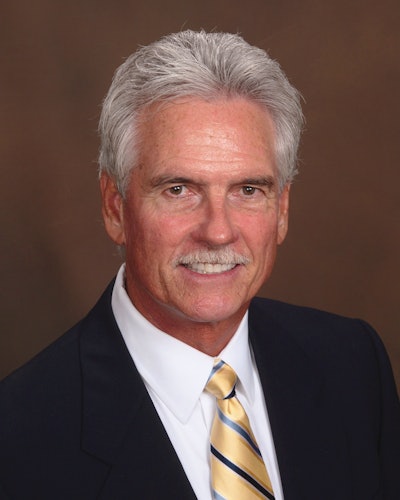
Thomas:I have worked more than 30 years in this industry. My career path allowed me to see the industry from several different perspectives including feed, premix, animal health, ingredient supply and the processing of grains, all of these experiences have helped me to understand our industry and the chain that is needed to ultimately make food to feed the growing population of the world. I also spent a lot of time overseas developing business as well as personal relationships with companies and individuals. I believe this has also given me a perspective of the changing global market and how these changes are impacting our U.S. feed industry.
F&G:What are your short-term goals for IFEEDER?
Thomas:To help companies and individuals within our American Feed Industry Association core base to understand what the Institute for Feed Education and Research represents. To help educate them on the increasing demand that is going to be put on our agriculture industry to sustain its position as a leader in feeding the world. To meet the demand of the population increase by 2050, our food production must double. To help them understand that as government funding continues to decline, we are responsible for our industry’s fate. To do the research and educational projects needed to sustain this great industry, we will need their support both corporately and individually through donations that will allow us to meet our objectives. To meet our short-term goals, we need 20% of the almost 600 companies in AFIA to stand up and be counted. If 120 new corporate donors will pledge $25,000 or more, that will generate an additional $3 million in donations. Of course, we know a $25,000 donation is not always possible, so we accept a pledge for the full amount and allow it to be paid off in five equal installments of $5,000 each year. And remember, IFEEDER is a 501 (c) 3 foundation which allows all donations to be tax deductible.
F&G:What are your long-term goals for IFEEDER?
Thomas:Once IFEEDER has successfully secured its base, which is made up of the AFIA member companies, our plans are to go after additional funding from outside of our industry — most likely closer to the consumer. If you ask why not go after these foundations today, the answer is simply they will ask us what percentage of our core group are supporting us? The answer to that, today, is simply not enough. However, I am optimistic. I believe in the long term, we will have more than 50% of our base AFIA member companies supporting IFEEDER with pledges.
F&G:What new objectives have you established for IFEEDER?
Thomas:Working with the board of trustees, we are constantly looking at ways to make sure IFEEDER is supporting their AFIA interests. Our research committee will be defining what projects IFEEDER will be working on. These projects will be decided by how various issues — either real or perceived — are impacting our industry and its members. We are in the process of upgrading our website to accomplish several things. One is to make sure all of our donors, both corporate as well as individuals, are recognized for their contributions to IFEEDER. For corporations and individuals that have made donations and reached, for example, a silver award contribution level, we will allow all new donations from them to be counted toward the next level, in this case gold. Our new website will allow individuals and corporations that have a desire to donate instantly to do so by using a credit card.
F&G:What is the most surprising aspect of your new job?
Thomas:我不得不说dication I have seen in the commitment of the members of the IFEEDER board of trustees.
我们都知道,这些人有全职的jobs and are very successful in the companies they represent. But time and time again I see them put in the extra effort, attending conference calls while they are traveling overseas, late night calls, calls on weekends, all to support and sustain our industry.
They are constantly looking for ways to make sure our industry will be there to meet the demands of the future and continue its place as a world leader in food and feed production.
F&G:Can you give us some insight into the research proposals you’ll be discussing at your upcoming board meeting?
Thomas:We currently have four research projects on our plate that we will be getting updates on: The National Academies, Nutrient Requirements of Beef Cattle (NRC); United Nations Food and Agriculture Organization (FAO) Life Cycle Assessment (LCA) of Feed Ingredient Project; National Salmonella Feed Sampling Research Project; and The National Academies, Nutrient Requirements of Dairy Cattle (NRC). These projects collectively will end up costing over $2 million in research funding. However, because of IFEEDER’s relationships with other partners, industry organizations and friendly third parties that want to see this work completed as well, we are able to leverage our position to get the work completed without having to fund the entire project alone.
F&G:What most excites you about the industry?
Thomas:Both the people and the businesses involved in this industry excite me. Many of the people I have worked with in this industry truly have a love for what they are doing. These businesses range from farming and ranching to entrepreneurial companies, where families have been involved for generations, to corporate business executives, who have responsibilities for the lives of thousands of employees.
I believe our industry is unique in the respect that these businesses have for the industry, and the responsibility they take personally to meet the growing food demand that the human population will require by the year 2050. I believe the people within our industry are the stewards of many of our natural resources; I believe they see this as part of their responsibility and accept the challenges associated with it. I cannot personally think of a better industry to be part of.
F&G:Please share your personal thoughts on why research is so important to the industry?
Thomas:I was born in the mid-1950s and grew up with my grandparents and uncles involved in livestock and grain farming. I have witnessed many technological changes in our industry. Just stop and think about this for a moment: In 1940 the average U.S. farmer could feed 19 people. Today, that same U.S. farmer feeds 144 people. The average dairy cow in the U.S. produces 20,000 pounds of milk, while it takes five dairy cows from Mexico to produce that same amount. It takes 20 cows from India to meet the production of that one U.S. cow. That is amazing! Our industry has come a long way because of research, technology and innovation; however, the game is not finished. The human population is expected to reach 9.5 billion people by 2050, so that 1 acre of farmland that feeds 1.6 people today will need to feed four people in the future. As wonderful as all the technology and advancements that we have made in our industry are, we will need to continue with these advancements in the future. The next time you hear someone complain about the technology used in growing crops and livestock, ask him if he likes his car, computer, cell phone, the list goes on and on. All of those industries could not have survived without research and technological advancements. Our industry is the same and that is why IFEEDER exists, to make sure the necessary research is done to move the industry forward.
F&G:What is the process for determining what direction to go with research?
Thomas:The Institute for Feed Education and Research has completed six research projects to date, with four additional projects still underway. The foundation’s research committee reviews proposed research to determine applicability for our industry. To date, almost all the ideas for research have come from AFIA ideas needed to support our industry. As we continue to build our funding, IFEEDER will pursue research ideas generated by the IFEEDER Research Committee, which will start to define the theme and direction for future research projects. The committee will look at what problems or perceived problems are having the largest impact on our industry and the AFIA membership. Furthermore, we want to hear from our AFIA membership base supporting IFEEDER. We want to know what they see as potential problems and how issues are impacting their businesses and our industry.
F&G:In one of its recent articles, Feed & Grain announced IFEEDER’s refined mission. Could you expand upon this?
Thomas:The Institute for Feed Education and Research continues to refine our direction to ensure we are maximizing the utilization of our funds and meeting the needs of our base supporters. The IFEEDER board of trustees feels both education and research are important to its membership. We recently received our largest donation from the Equipment Manufactures Group (EMC). IFEEDER and the EMC group are working together through the EMC scholarship fund to continue to bring new talent into the American feed industry. This year we have made three additional scholarships available to universities involved in agriculture that have a working relationship with AFIA. Looking ahead, the information that we obtain from these research projects will be more clearly and concisely articulated back to the industry — better detailing how the research is of value to them and their customers, and eventually to consumers. This is what we now mean by education.
IFEEDER Applauds New Video, 'Is a Cow Eating My Lunch?'
The Institute for Feed Education & Research recently funded an issue paper by the Council for Agricultural Science and Technology, or CAST, entitled,“Animal Feed vs. Human Food: Challenges and Opportunities in Sustaining Animal Agriculture Toward 2050,”which CAST developed into a 12-minute video,“Is a Cow Eating My Lunch?”
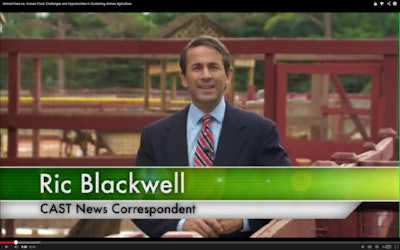
“Expanding the paper in a video format will increase the reach of this valuable information—today’s consumer is looking for information in a variety of places. Videos on YouTube are just another avenue to reach those with questions about animal agriculture,” Thomas added.
The video provides information about the "feed versus food" issue, including the following:
Animal agriculture provides safe, affordable, nutrient-dense foodstuffs that support human health and well-being as part of a balanced diet.
Animal agriculture provides for a very efficient means of capturing value from by-products, such as citrus pulp or cottonseeds, which would otherwise go to waste.
The global livestock industry faces considerable challenges as the population and demands for protein grows. These demands must be aligned with concerns about the environment, economy and sustainability. Many may not realize the positive impact that productivity gains of modern livestock production practices have made in these areas.
Livestock production is important in the economic and social sustainability of developed and developing countries alike.
In the paper and during the video, Task Force Chair Dr. Jude Capper (Montana State University) uses statistics and common sense to explain why animal agriculture is important. “Cattle eat many types of feed substances that are not edible by humans. This means a more sustainable system.”
Capper also explains land incapable of supporting the production of human food crops can be used efficiently by ruminant animals to produce meat and milk products.
The “Is a Cow Eating My Lunch?” video is one of many outreach materials that have been formulated by CAST from research sponsored by IFEEDER. CAST also has producedAg quickCASTsexcerpted from the “Animal Feed vs. Human Food: Challenges and Opportunities in Sustaining Animal Agriculture Toward 2050,” document, which is a one-page fact sheet on the topic.






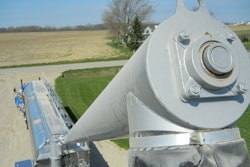

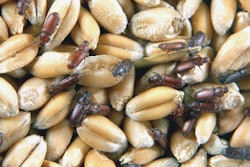
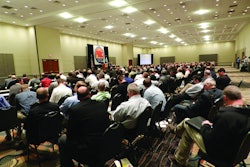











![Optimix Andritz Scaled[1]](https://img.feedandgrain.com/files/base/wattglobalmedia/all/image/2023/05/optimix_Andritz_scaled_1_.645eb7a1ed508.png?auto=format%2Ccompress&fit=crop&h=112&q=70&w=112)
